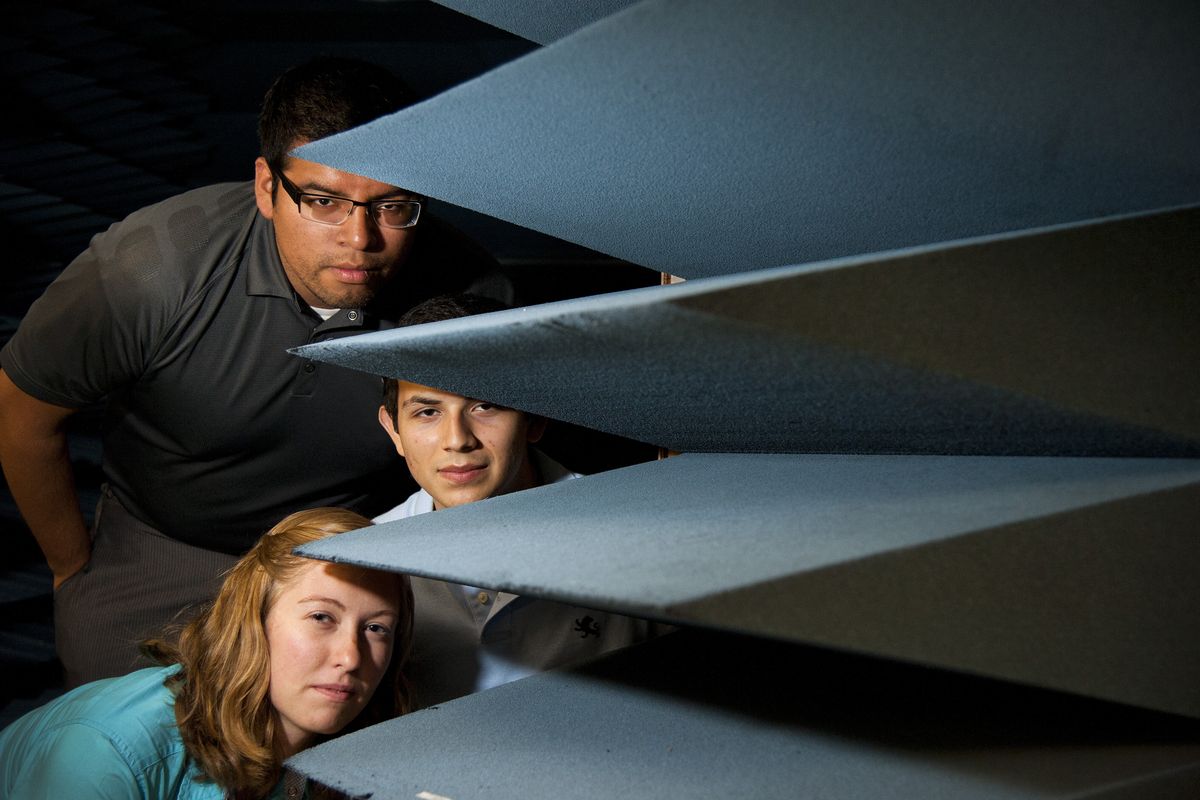GU researchers’ antenna eases wireless network traffic jam

Dropped calls, unsent texts and badly buffered cat videos are no fun.
But there’s a more serious side to overburdened wireless networks. They can wreak havoc during crises.
Public safety radios have their own network, and cellphones have theirs. However, the two can interfere, especially during emergencies when the data load is increased by worried people contacting relatives or looking for news, said Steve Schennum, Gonzaga University electrical engineering professor.
That’s why researchers at Gonzaga have developed antennas that manipulate the direction in which the radio waves they emit travel.
“It allows you to cram more data into the airspace,” Schennum said.
The process changes the polarization of the radio waves. Most mobile devices have vertically polarized radio waves. This means the electric field component is traveling vertically. However, radio waves can be polarized in almost any direction – including horizontally or circularly.
The system, which Schennum has worked on since 2007, allows antennas to switch the direction the waves travel when there is too much traffic.
Schennum believes this technology could reduce the interference experienced during emergencies.
“Our antennas could reduce that problem a lot, if they were to build it into the radios,” he said.
Schennum’s research was made possible by a $1.1 million federal grant given in 2011, the largest ever received at Gonzaga. The National Science Foundation grant allowed Schennum to outfit his lab.
Of particular importance for this kind of testing is a special chamber – basically a large, padded electromagnetic vault that absorbs all electromagnetic waves, both internally and externally. This allows researchers to test antennas in the chamber without interference.
“It’s anti-echo to make it look like you’re out in space with nothing around you,” said Bob Conley, president and CEO of Eigen Wireless. “When you close the door, it’s equivalent to taking your cellphone to the moon.”
Conley is an adjunct professor at Gonzaga, as well as a business owner. He works closely with Schennum, and pays to use the lab to test his products.
Caitlin Croskrey, a senior electrical engineering major, has worked in the lab for two years, spending about 30 hours a week there. Being able to do high-level research as an undergraduate is a rare experience, she said.
“These are amazing tools,” she said. “Your typical undergraduate doesn’t get to touch these.”
On a typical day, Croskrey said she analyzes antenna simulations that run throughout the night. She then builds an antenna based on the simulation. These antennas are tested in the chamber.
Although Conley’s company has produced and patented antennas that operate on horizontal frequencies, he has yet to mass-produce the antennas that can intelligently switch polarization.
Although they could be used for conceivably any reason, Schennum said they’ve looked specifically at public safety radio systems.
“That’s our goal, to make sure these life-critical systems can work reliably into the future as wireless systems continue to proliferate and congest the bands,” Conley said.